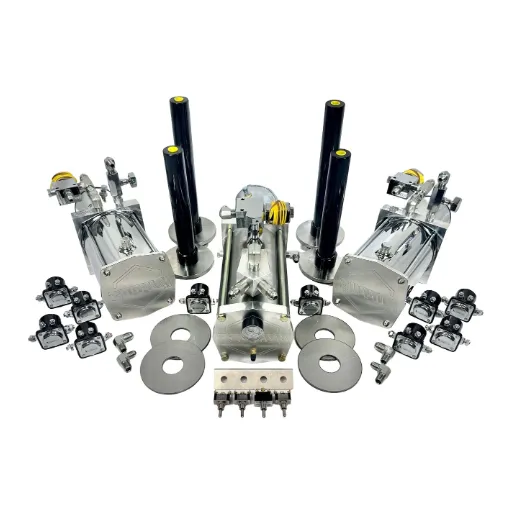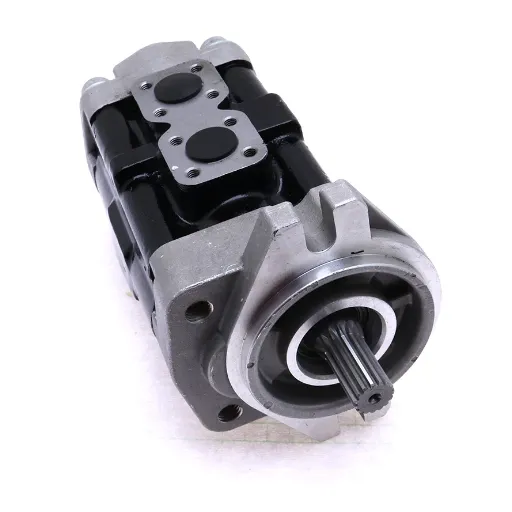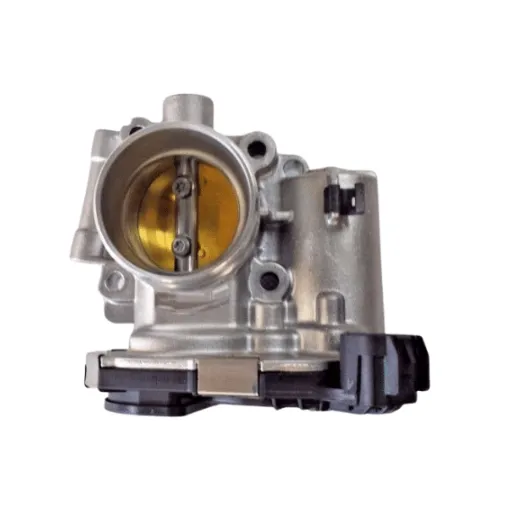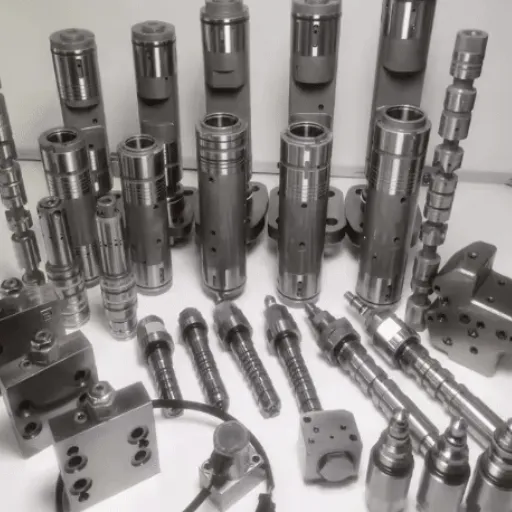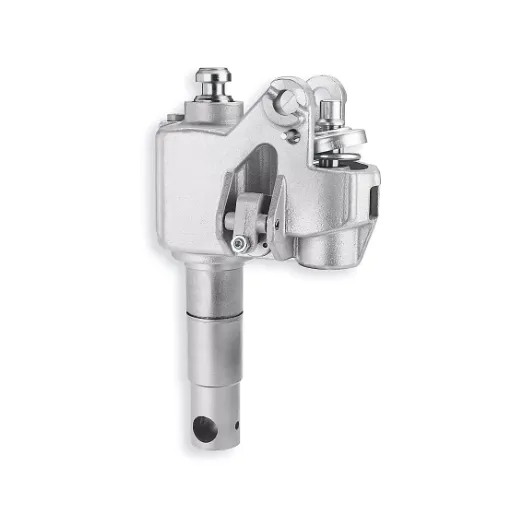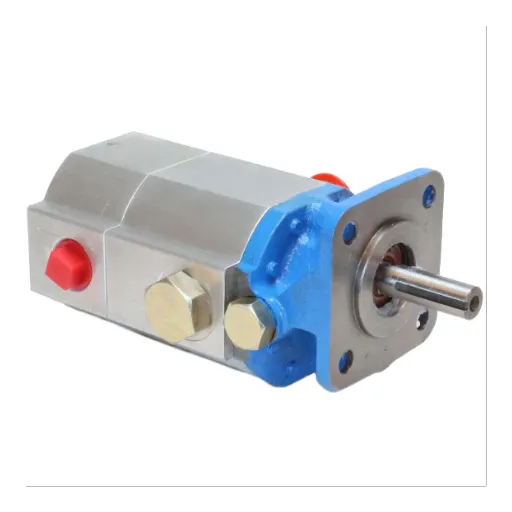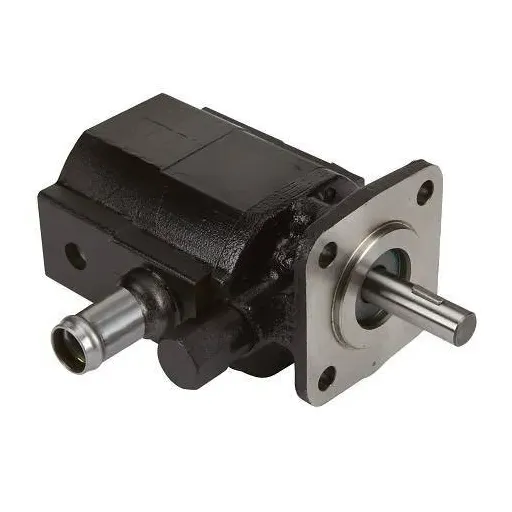Selecting an appropriate hydraulic pump and motor kit is a decision of key importance that can greatly affect the efficiency, reliability, and overall performance of your hydraulic systems. Managing complex industrial machines or heavy equipment, the right combination of components provides the best power transmission and operating precision. This guide aims to make the selection process easier, sharing insight about the key factors to consider. We go into compatibility and specifications as well as quality and performance measures so that you may clearly make a decision that best suits your precise needs.
Understanding Hydraulic Systems
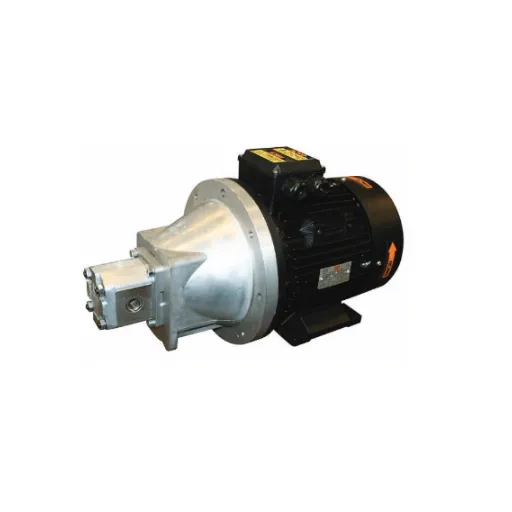
What is a Hydraulic System?
A hydraulic system is one type of mechanism that could generate force, conduct control, or apply power while using fluid pressure. These systems work according to Pascal’s Principle, which states that pressure exerted on a confined fluid is transmitted equally in all directions. This principle helps hydraulic systems exert considerable force with precision and efficiency.
The main components of a hydraulic system include the following: a pump, which converts mechanical energy into hydraulic power; valves, which control the flow and pressure of the fluid; actuators (cylinders or motors), which convert hydraulic energy back into mechanical work; and a reservoir, which stores the hydraulic fluid. These systems normally use incompressible fluids, such as oil, to ensure consistent performance under high-pressure conditions. Adequate maintenance of the system, including fluid handling and inspection of components, ensures good system reliability.
Hydraulic systems find a myriad of applications in various industries on account of their versatility and power. From construction equipment like excavators and cranes to industrial manufacturing machinery, automotive brake systems, and aircraft control mechanisms, hydraulic systems serve engineering and manufacturing tasks that entail heavy load-holding and precision.
How Hydraulic Systems Work
Hydraulic systems function based on Pascal’s Law, which states that if any pressure is exerted upon any confined liquid, it is transmitted equally in all directions. According to this basic rule, a small force may be applied on a smaller area to generate a much greater force over a bigger area, thereby allowing the system to carry out heavy lifting or fine movements with minimal human input.
Some important elements in hydraulic systems are hydraulic fluid reservoirs, pumps to increase fluid pressure, valves that control the flow of fluid, and actuators, such as cylinders or motors, that convert fluid pressure into mechanical energy. Hydraulic fluid is usually a very poor-quality oil-like liquid, and this fluid acts as a medium to carry energy through the entire system. Some mechanical energy stored by the actuator after receiving pressurized fluid from a pump is then used to perform tasks like moving parts of machinery or lifting loads.
Hydraulic systems need maintenance and monitoring to keep functioning smoothly. These maintenance activities include checking hydraulic fluid levels, observing for leakages within the system, and inspecting system components for any damage. This will reduce the likelihood of a failure, allowing them to operate effectively and safely under challenging service conditions.
Applications of Hydraulic Systems
With precision control, high force output, and efficient energy transmission, it is possible for hydraulic systems to be employed across various industries. Here are five main uses of hydraulic systems, with a brief explanation of how each works:
- Construction Equipment: Hydraulic systems are the backbone of construction machinery such as excavators, bulldozers, and cranes. These machines use hydraulic cylinders and motors to lift, carry, and set down heavy materials with precision and without much effort. For example, excavators use hydraulic mechanisms for the arms and buckets to dig tons of earth efficiently.
- Automobile: Hydraulic technology finds use in the automotive industry for systems such as braking and power steering. Hydraulic brakes multiply the applied force from the driver, thereby improving safety and reliability. Power steering set-ups are essentially hydraulic, with the current generation of motor vehicles using them for easy maneuvering, especially for heavy and bulky vehicles.
- Industrial Manufacturing: Hydraulic presses and injection molding machines are commonly found in manufacturing plants. They produce enormous forces to shape, form, and compress those materials. For example, hydraulic presses utilized in automotive manufacture impose force up to 10,000 psi to form precise components.
- Aerospace and Aviation: In aviation, hydraulic systems may be around the mineral powder bags required for landing gear deployment, control of wing flaps, and braking systems. These are systems designed to be especially withstandignant hard pressures of usually above 3,000 psi and environmental hazards-aiding perspective to safely operate.
- Mining and Drilling: Hydraulic systems are essential in the sectors of mining and drilling so that they can undertake power operations for drilling rigs, conveyor belts, and loaders. Their capability to handle heavy loads and work in adverse conditions is an asset for resource extraction processes.
Due to their versatility and robustness, hydraulic systems constitute one of the greatest innovations in technical and industrial applications.
Choosing the Right Hydraulic Pump
Types of Hydraulic Pumps
Hydraulic pumps provide the necessary component to a hydraulic system that converts mechanical energy into hydraulic energy. The actual pump chosen depends upon the application, the efficiency, operating pressure, and fluid flow expected. Below are the main types of hydraulic pumps along with their features and their applications:
-
Gear Pumps:
Gear pumps are the simplest and most common types of hydraulic pumps. The gears mesh together and work to pump the fluid. They are sturdy and relatively cheap and well-suited to high-speed conditions. However, volumetrically, they are not as efficient as other types.
-
Vane Pumps:
Vane pumps employ vanes mounted to the rotor, pushing fluid through the system with great precision. These operate silently as compared with gear pumps and have slightly better efficiency. They find usage in medium-pressure applications that need very clean hydraulic fluids. In contrast, gear pumps will work with dirty fluids.
-
Piston Pumps:
With the efficient design and capability of carrying high loads, piston pumps are used at high pressures. These comprise pistons that are pushed against fluid-filled chambers to generate a very powerful pumping action. They provide greater efficiency and accuracy but demand greater maintenance.
-
Axial Piston Pumps:
Axial piston pumps are a category of piston pumps where there is a cylinder block that rotation parallel to the drive shaft. Due to their small size and flexibility, these pumps are ideally suited for variable displacement systems.
-
Radial Piston Pumps:
The pistons of a radial piston pump are set up radially about a cylindrical drive shaft. Because of the complexity of the design, these pumps are commonly used for specialized applications where delivering high pressure with great efficiency is required.
By knowing what exactly your hydraulic system requires, you can select the appropriate pump type to ensure efficiency, reliability, and performance. Hence, the evaluation of factors such as the expected flow rate, operating pressure, cleanliness of the fluid, and cost will factor into the determination of optimizing hydraulic system performance for either industrial or mobile use.
Factors to Consider When Selecting a Hydraulic Pump
Selecting the hydraulic pump for your system is a very crucial decision affecting both performance as well as operational efficiency. Here are the key factors taken into account during the selection:
Flow Rate and Pressure Specification:
The flow rate in gallons per minute or liters per minute that your hydraulic system demands should be evaluated, and it should be ensured that the pump can deliver this flow under the required working pressure most of the time. Flow and pressure together define energy output, thereby making flow and pressure considerations for pump selection.
Type of Hydraulic Fluid Used:
Consider the type of hydraulic fluids in your system with their viscosity and lubrication properties; some pumps are more suitable for certain fluids than others with respect to thermal or chemical characteristics. Fluid incompatibility will lead to early wear of devices, poor system performance, and failure due to contamination.
Operating Environment:
Consider environmental conditions like varying temperatures and humidity levels, potential contaminant ingress, and altitude. Extreme conditions, for example, may require pumps that have special seals or corrosion-resistant materials for reliable operation and long service life.
Energy Efficiency Considerations:
Energy efficiency is gaining significance in hydraulic systems nowadays. These pumps can reduce the energy consumption of the hydraulic system by adjusting their output according to the demand of the system, especially when applied intermittently or under variable load.
System Load Profile:
Understand the load profile of the hydraulic system, continuous, intermittent, or peak duty. For those with varying demands, load-sensing technology-based dynamic response of the pumps helps improve performance.
Maintenance and Life-Cycle Costs:
A pump selection must take into account the long-term costs, considering the maintenance, spare parts, and service interval. Choose designs that ease maintenance to reduce downtime. Pumps supplied by reliable manufacturers are usually supported by spares with a faster supply, providing a win-win situation for the purchaser.
Physical Space and Mounting Requirements:
Go through the space constraints offered by your system; various pump types, mainly gear, vane, and piston, differ in size and mounting arrangements, thus making it worth selecting that which can fit in the allowed installation space while also complementing the system design.
Engineers and system designers achieve the best performance of hydraulic systems by selecting hydraulic pumps that meet the operational requirements and support the overall performance through attending to these considerations.
Performance Criteria for Hydraulic Pumps
In selecting a hydraulic pump, some critical criteria must be considered to ensure the pumping system operates efficiently and reliably under the set operating conditions. These criteria consist of volumetric, mechanical efficiencies, and other efficiency parameters to understand the pump’s conversion of an energy source.
Volumetric Efficiency:
Volumetric efficiency indicates the capacity of the pump to limit internal leakage and deliver the maximum fluid possible out of its theoretical displacement. A high measure of volumetric efficiency in percentages is required to keep pressure and flow rates in the system constant.
Mechanical Efficiency:
Mechanical efficiency is concerned with reducing frictional losses inside the moving parts of a pump. It directly affects the power consumption; the lesser the mechanical loss, the lesser will be the power requirement and generation of heat. The use of materials, surface finishes, and lubrication methods are all factors that can be optimized with respect to this efficiency.
Pressure and Flow Ratings:
Pumps are to be rated as per the maximum pressure and flow applicable for the service it is to undergo. Service in excess of the rated pressure and flow shall shorten the life of the pump, whereas a pump rated much above the actual service requirement may prove to be inefficient and costly.
Noise and Vibration Levels:
Noise and vibration in an environment are key factors for consideration where adherence to occupational safety standards (e.g., ISO 11200) or worker comfort is at stake. Design, therefore, is, in part, a means to minimize noise incidence by choosing an appropriate type of drive mechanism to be used, choosing housing materials that will provide some insulation, etc.
Thermal Stability:
Thermal stability comes with the ability to perform on test under constant mode without occurrence of serious deterioration due to heat building. Along with the use of hydraulic oil and system cooling, the pump mustalso inherently be able to withstand thermal stresses encountered in its application.
Durability and Material Compatibility:
Long-term performance is greatly influenced by the materials used in the construction of the pump. Considerations such as wear and corrosion resistance, and compatibility of the material with hydraulic fluid are important in the selection of a pump that has a long operational life span.
By taking these performance criteria in a systematic fashion, engineers can greatly improve system efficiency, reduce operating costs, and lengthen the service life of hydraulic systems. The use of manufacturer’s datasheets, testing programs, and actual performance analyses will further confirm that the selected pump does comply with the stringent demands of a modern hydraulic application.
Choosing the Right Hydraulic Motor
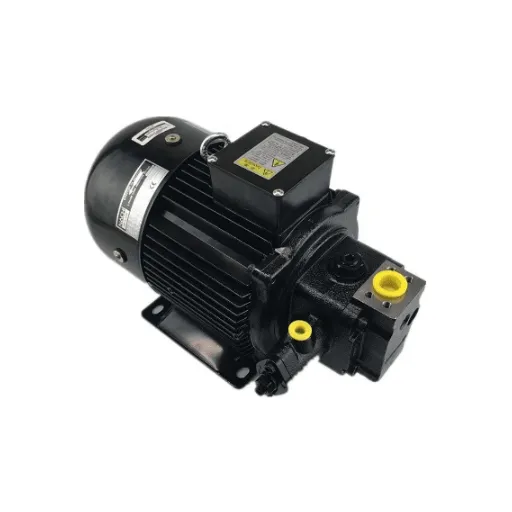
Types of Hydraulic Motors
Hydraulic motors are of different, designated types depending upon their peculiar use, demands of performance, and working conditions. The three main low-speed hydraulic motors are gear, vane, and piston. Understanding their build configurations and performance potentialities is paramount in selecting the correct motor working in any hydraulic system.
⚙️ Gear Motors
Gear motors are simple and very robust types of hydraulic motor working with meshed gears that transmit mechanical energy and usually employed in systems where dependability and price take precedence over precise control. Gear motors will work well in low-to-medium torque applications, with efficiencies of around 85 to 90%. However, he will be louder and less efficient than other types at higher pressures.
🔄 Vane Motors
The vane motor has a rotor with vanes mounted radially that slide in and out of the motor housing, creating chambers that are alternately enlarged and contracted to transform hydraulic power into rotating motion. Vane motors are well known for their efficiency and smooth operation and are apt at moderate-pressure systems demanding constant output speed. Their working range allows for very precise speed control applications like conveyors and material handling, though they tend to wear out in application environments with contaminated fluids.
🔧 Piston Motors
Piston motors are for the best service applications that use axially or radially aligned pistons to generate torques that can handle extreme pressures above 4,000 psi. These motors are very efficient, with rates above 92%, and are best for arduous undertakings in heavy machinery and construction equipment or energy-intensive industries. They stand to control and wear well, which places them as the most preferred motor where precision and reliability matter.
Choosing the right hydraulic motor depends on torque and speed characteristics demanded by the application, operating pressure, fluid quality, and environmental considerations. By simulation tools, performance graphs, and manufacturer specifications, engineers choose the motor that satisfies logical considerations in the practical requirements of modern hydraulic systems.
How to Match Motors with Pumps
For a more efficient pairing of hydraulic motors and pumps, the fundamental performance characteristics and criteria of compatibility of these two must be taken into consideration. The motor displacement and torque required for operation should be compatible with the flow and pressure being delivered by the hydraulic pump. For example, motors designed for high torque applications would need pumps that could deliver enough volume of hydraulic fluid at the required pressures.
The calculations of flow and pressure must be held in strict regard. Motor speed (RPM) can be found by dividing the pump flow rate (in gallons per minute or liters per minute) by the motor displacement per revolution. Torque output of the motor can also be determined with respect to operating pressure and motor displacement.
The motor and the pump have to be matched for efficiency, because both will lose efficiency through internal leakage and mechanical friction. Selection of highly efficient units will thus reduce energy wastage and increase system life. Another consideration before completing the decision on any motor and pump pairing will be the material compatibility of the components with the hydraulic fluid. This factor assures both efficient performance and durability.
Environmental considerations regarding temperature extremes and whether the system will be open-loop or closed-loop will narrow down even further the selection of components. Most sophisticated simulation packages and software solutions now incorporate manufacturer-specific data, allowing the engineer to take a comprehensive look at how systems behave before making final design decisions. Such precision in design allows for designing highly reliable and efficiently performing hydraulic systems literally customized to fill the operational needs.
Hydraulic Pump and Motor Kits
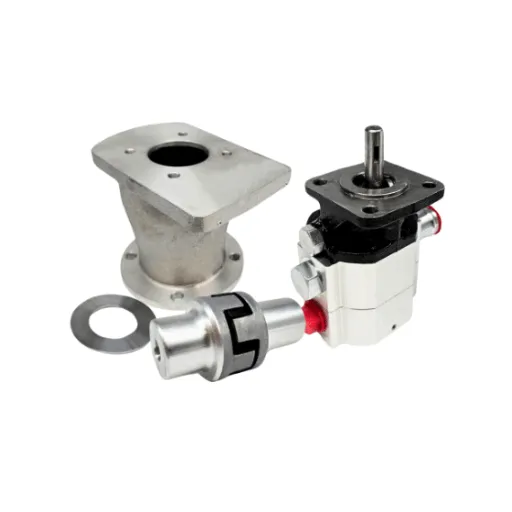
Benefits of Using Complete Kits
Complete hydraulic pump and motor kits offer big benefits that let engineers and operators concentrate more on system design and performance optimization. Here are five elaborate benefits when harnessing these kits:
Simpler Installation Process
Complete kits come with all components required and engineered to be compatible with one another, securing less time for assembly and preventing installation failure. The labor workflow would then proceed smoothly, which lowers labor cost.
Increased System Reliability
Being predesigned to operate in unison, these kits ensure reliable and consistent operation. This increases system uptime and efficiency as it diminishes those malfunction cases caused by incompatibility issues.
Greater Efficiency of Performance
Optimized hydraulic pump and motor kits are custom-made to obtain their highest performance under a variety of operating conditions. This means better energy efficiency and reduced operating costs, especially for applications that mandate continuous operation.
Reduced Maintenance
The coordinated and standardized design of these kits helps in simplifying maintenance. It decreases compatibility issues and provides a considerably reduced incidence of breakdowns and unplanned downtimes.
Cheaper Purchase Cost
In most cases, a kit that bundles pumps, motors, and related components will incur less expenditure than purchasing each item separately. A few procurement cycles also save time and resources on administration.
These complete pump and motor kits thus allow industries to reach superior performance at lower overhead, while thereby making them highly considered and chosen for advanced hydraulic systems.
Comparative Analysis of Different Kits
The very nature of hydraulic kits determines the possibilities of choosing between certain types (gear, vane, piston) with a particular efficiency, mostly pressure, capacity for application; thus, these specialized kits cater to industrial, mobile, or heavy-duty applications for a particular purpose.
| Key Point | Gear Kit | Vane Kit | Piston Kit |
|---|---|---|---|
| Efficiency | Moderate | High | Very High |
| Pressure | Low-Medium | Medium | High |
| Noise | High | Low | Moderate |
| Durability | High | Moderate | Very High |
| Cost | Low | Moderate | High |
| Application | General | Precision | Heavy-Duty |
Maintenance of Hydraulic Components
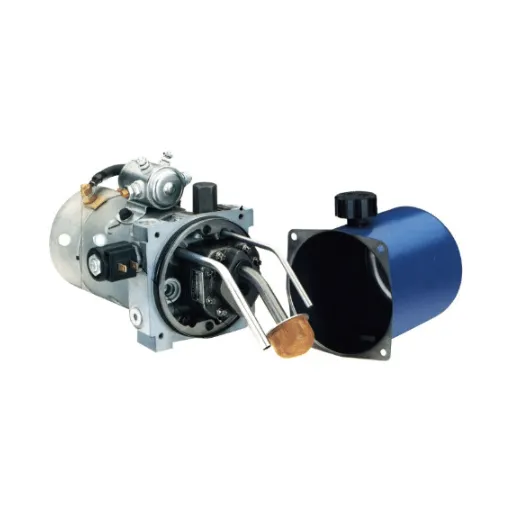
Essential Maintenance Tips
🔍 Routine Inspection
Conduct routine visual inspections of hydraulic components to detect signs of wear, corrosion, or damage. Monitor for accidental leakage at seals, hoses, and pumps, as fluid leakage indicates the breach of system integrity. Early diagnosis prevents more serious faults from developing.
🧪 Fluid Quality Monitoring
Proper maintenance of hydraulic fluids is very critical. Contamination testing for dirt, water, or metallic particles should be done on the hydraulic fluid using special diagnostic tools. Changes must be made to the fluid as per the manufacturer’s recommendation on the scheduling of the replacement, using the correct grade and viscosity for their systems to perform well.
🔧 Filter Maintenance
Hydraulic filters must be replaced or cleaned at regular intervals to provide good flow conditions and minimize the chance of particulate contamination. A clogged filter reduces efficiency and accelerates wear in other components, for example, pumps and valves.
🌡️ Temperature Control
Regularly monitor temperature conditions in the hydraulic system. Overheating may lead to a reduction in the viscosity of the fluid, which causes component failure. Present cooling arrangements, such as heat exchangers, must be working and adequate for the application.
⚙️ Correct Component Calibration
Keep all components properly calibrated, so they do not suffer from misalignment or inefficient operation. For example, improper pressure settings can result in overstressing certain components that degrade prematurely.
According to these detailed maintenance procedures, enhanced durability, less downtime, and optimal performance of a hydraulic system according to operational demands can be achieved.
Extending the Lifespan of Hydraulic Systems
I emphasize regular maintenance of hydraulic systems by monitoring equipment performance closely, which contributes to longevity. Regular inspections are carried out so that potential problems are dealt with timely manner when they are still minor. I check leakages in the systems, concerning fluid levels and the condition of any seals. Another best practice is always to use good-quality hydraulic fluid; it will diminish risks of contamination and uphold the operation of the system.
Besides that, I make component replacements and change fluids as recommended by the manufacturer. Ensuring that all filters are replaced in due course prevents debris and particles from infiltrating the system. Meanwhile, I also keep an eye towards operating at conditions that do not present extreme temperatures or pressures, as these will unfairly stress and degrade the components of the system.
Lastly, I take care of storage and operating practices to hold onto the entire integrity of the hydraulic system. When the equipment is not being used, I keep it in a clean, controlled environment that will foster the buildup of moisture or contamination. By following these best practices, I can maximize performance and extend the serviceability of the hydraulic systems I work with.
Frequently Asked Questions (FAQ)
Q: What do I want to consider when choosing a hydraulic pump and motor kit?
A: When selecting the right hydraulic pump and motor kit, consider the specifics of the application, such as system pressure, fluid flow, and how much fluid it should carry. Then, the thing to look at will be the types of hydraulic pumps, fixed and variable displacement pumps, which offer an application best suited to your machinery or application for performance or efficiency.
Q: What types of hydraulic pumps are there in the market?
A: The types of hydraulic pumps are nitrile pumps, piston pumps, and variable vane pumps. The design of each differs, and so does its suitability for applications. For example, piston pumps are generally used for high-pressure applications, and gear pumps are more suited for low-pressure environments.
Q: How should I know if I need a fixed displacement pump or a variable displacement pump?
A: Choosing a fixed or variable displacement pump, depending on your application, depends entirely on your needs. A fixed displacement pump can be used where the application requires a fixed flow, while a variable displacement pump can vary the flow rate with the needs of the system, granting flexibility and efficiency.
Q: Can hydraulic pumps convert mechanical energy into hydraulic energy?
A: Yes, hydraulic pumps convert mechanical energy into hydraulic energy. This conversion permits the proficient usage of power in different applications, especially in industrial and mobile machinery, where it is needed to lift heavy loads.
Q: What factors affect the performance and efficiency of a hydraulic pump?
A: Performance and efficiency of the hydraulic pump are subject to many criteria, including system pressure, pump type chosen, and fluid used. The best results will be obtained when the pump is matched with the application and the conditions under which it will operate.
Q: How can I choose and determine the best hydraulic pump suitable for me?
A: To choose the best hydraulic pump for any application, it is necessary to determine torque, flow rate, and pressure. From the assessment, one may consult manufacturers or experts to recommend the best hydraulic pump suited to their specific application.
Q: What is the role of hydraulic motor kits in hydraulic systems?
A: Hydraulic motor kits assist in converting hydraulic energy back into mechanical energy within hydraulic systems. They are primed to work with hydraulic machinery and to ensure that the system continues to operate efficiently under load conditions.
Q: How can I make a hydraulic pump less noisy?
A: When aiming at reducing noise produced by a hydraulic pump, one should choose a pump designed for low noise operation, such as some variable displacement pumps. Furthermore, correct installation practices and regular upkeep of the hydraulic system also contribute to noise reduction.
Q: Are there any specific hydraulic pumps for agricultural machines?
A: Stated are hydraulic pumps best suited for agricultural machines, but these pumps cater to the special demands of farming equipment to ensure dependable, optimum performance, and efficiency in varied agricultural applications.
🔧 Ready to Choose Your Hydraulic System?
With this comprehensive guide, you’re now equipped with the knowledge to make informed decisions about hydraulic pump and motor kits. Remember to consider all factors: application requirements, efficiency needs, environmental conditions, and maintenance capabilities for optimal system performance.



